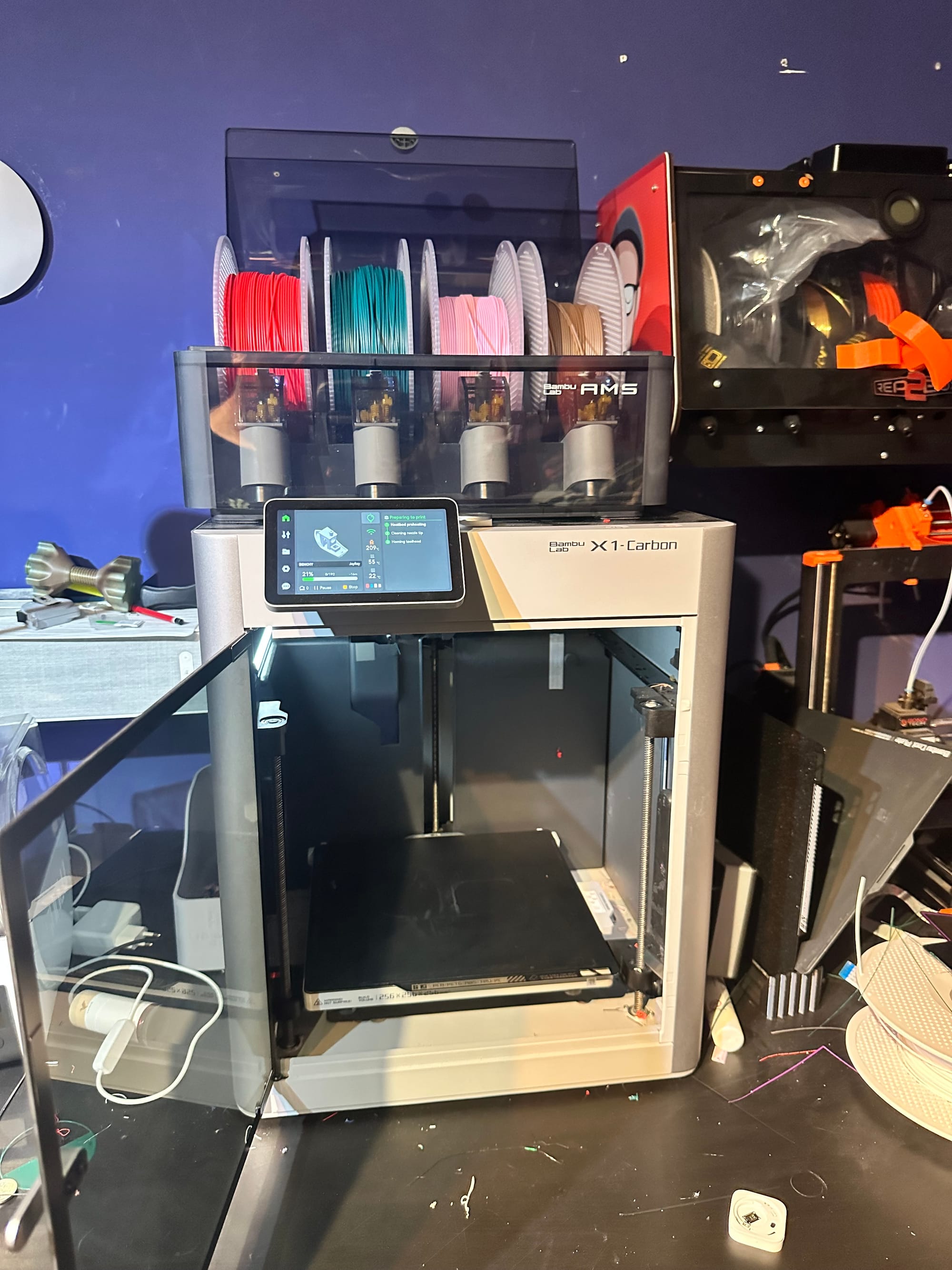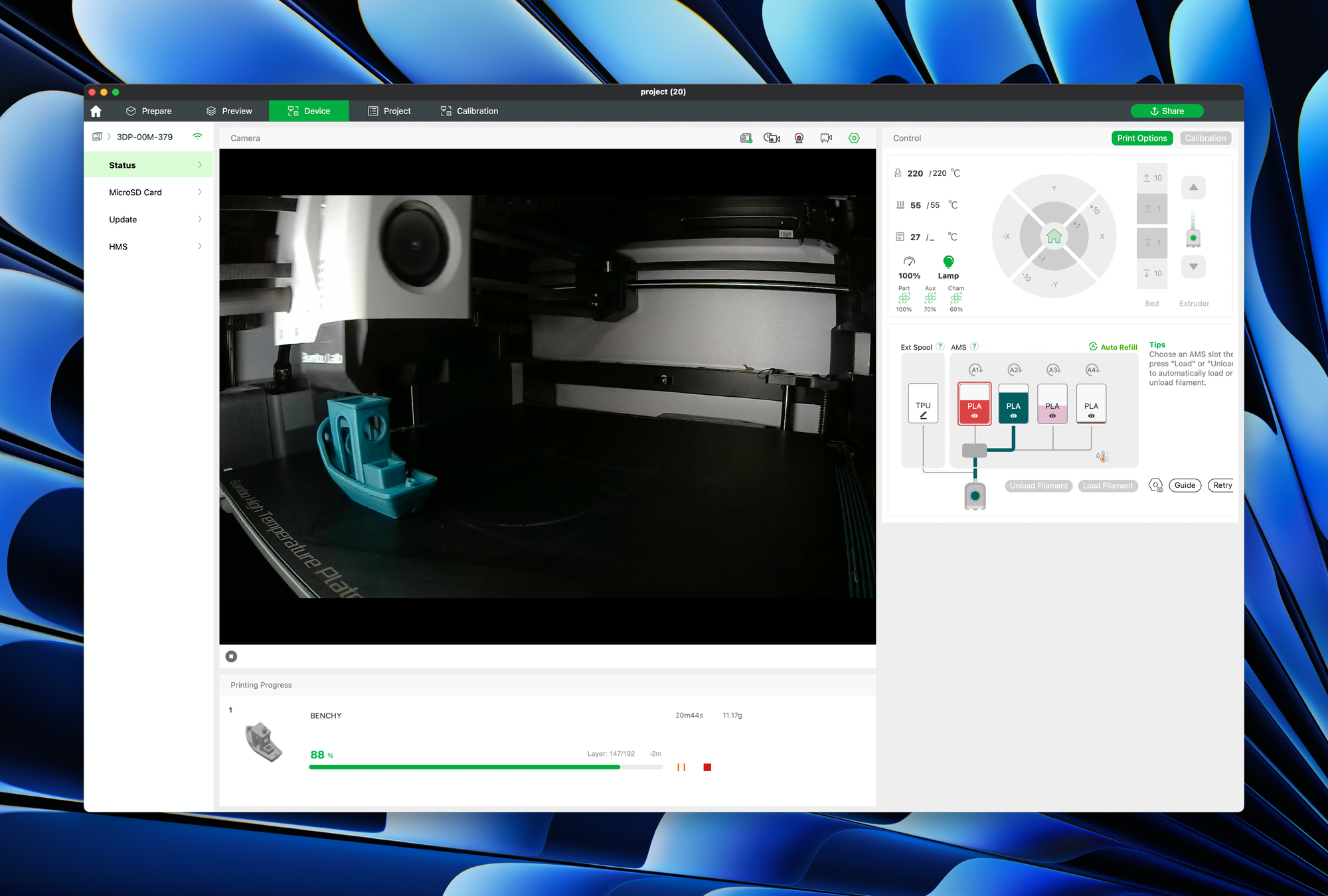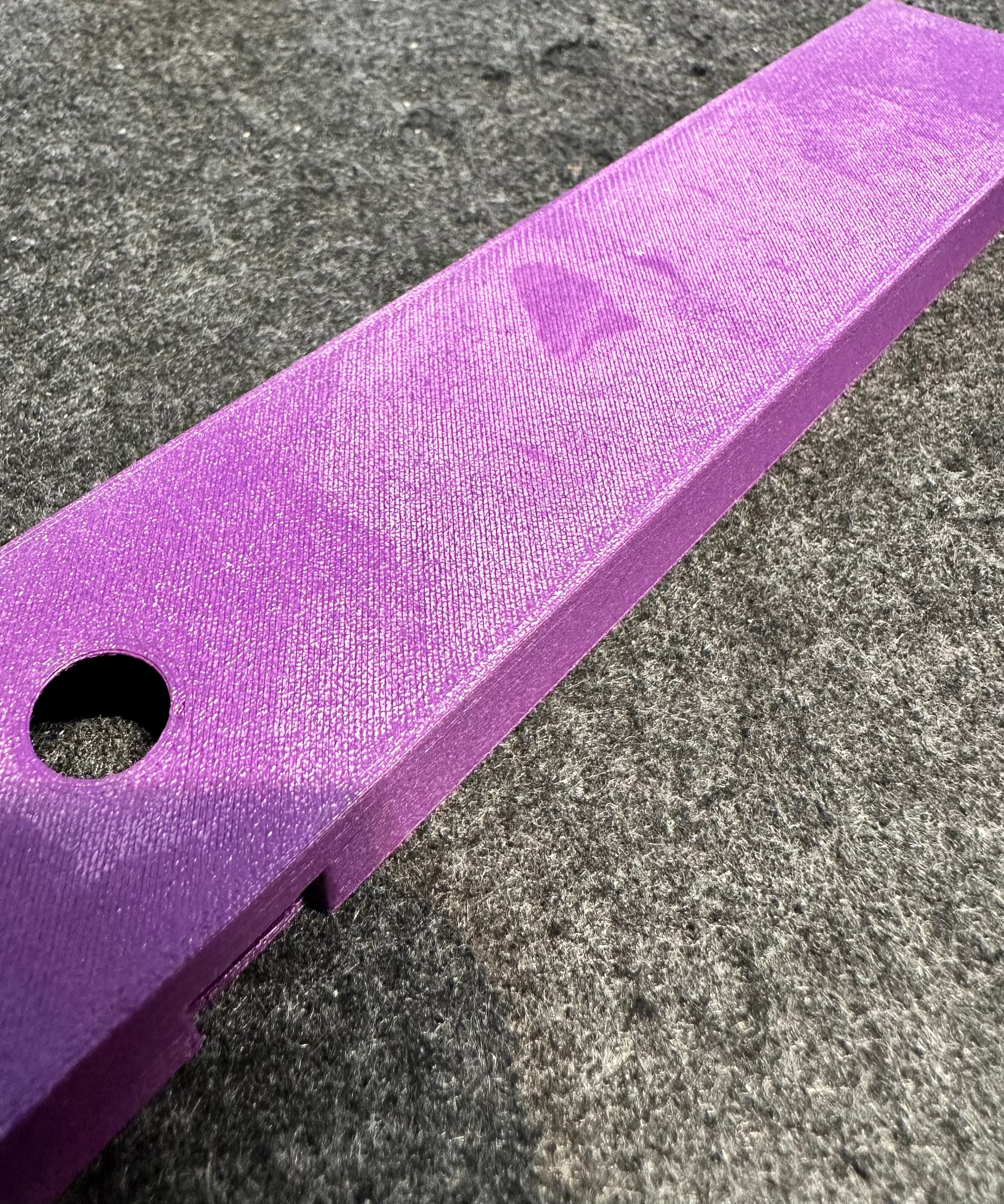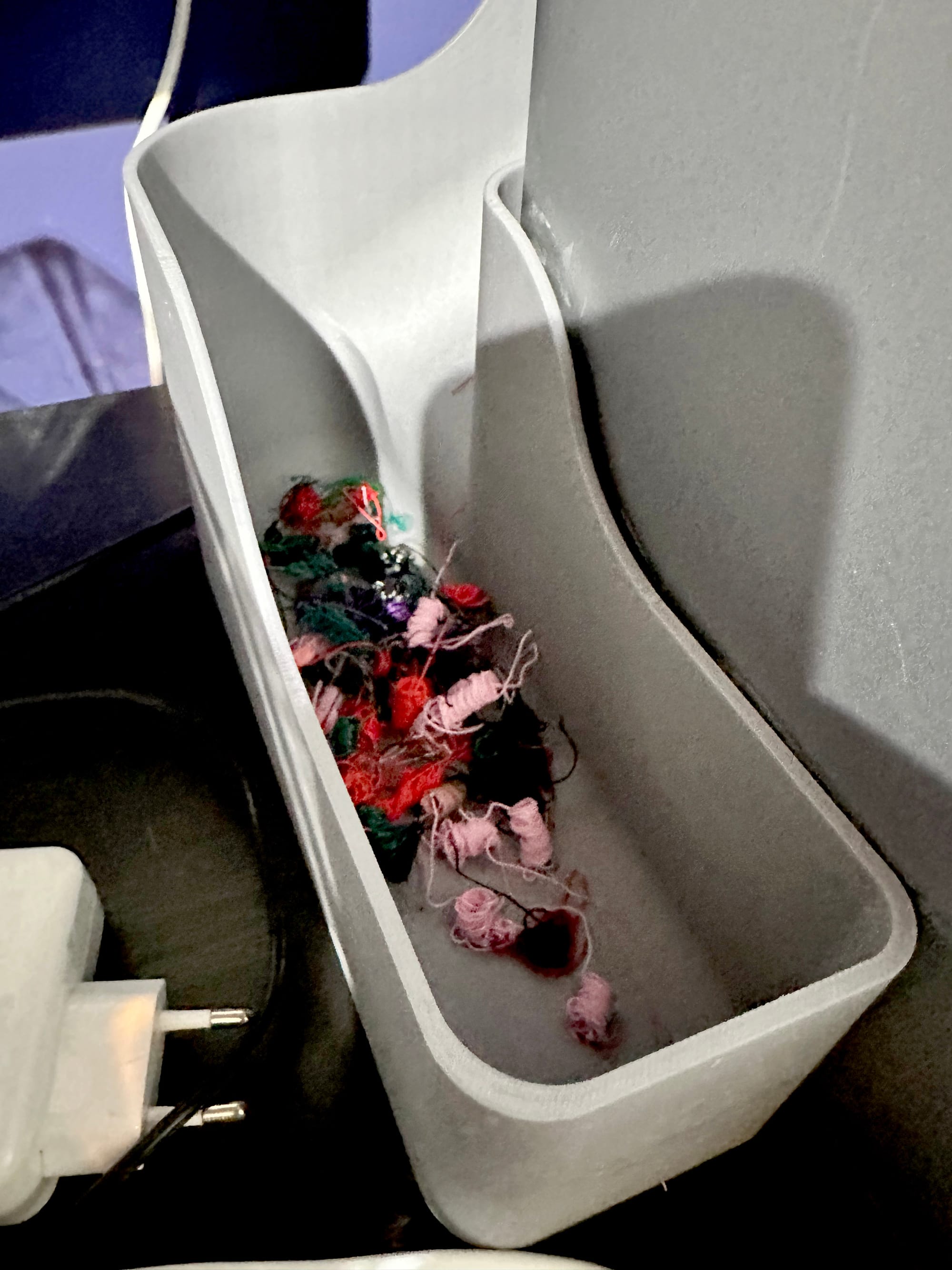The Bambu Lab X1C
Three years ago marked my first venture into 3D printing. Ever since I’ve been printing non-stop, and I’ve been enjoying making my kids, friends, and family happy with funny and useful prints. Scroll down to the very end of this article for an image of some funny NSFW prints.
A couple of months ago, I bought a new 3D printer: the Bambu Lab X1C. I was (and still am) a happy Prusa user – I owe both a Prusa i3 MK3S+ and a Prusa Mini+, and I even had a pre-order open for the Prusa XL. But around a year ago, Bambu Lab came out of nowhere and introduced a printer that blows my old Prusa’s away:
- It’s enclosed.
- It’s speedy.
- It’s a CoreXY printer, meaning the bed doesn’t sling back and forth like an i3-style printer. This improves print quality and speed.
- It has a multi-material system that works (compared to the blood, sweat, and tears the Prusa MMU cost me).
- It comes with a LIDAR and load sensor for perfect first layers, no calibration needed.
- It’s network-connected.
- It has a built-in webcam, and AI faillure detection.
- It has a beautiful touch screen.

My impressions so far have been nothing short of amazing. It’s like switching from Windows to a Mac. The amount of magic that’s going on in this machine is incredible.
- All of Bambu Lab’s filaments have RFID tags, which tell the machine what color and filament type is being printed and keep track of how much filament you’ve got left.
- It does some test extrusions to get the perfect pressure.
- The first layer is scanned, and printing is paused if it’s not perfect.
- Print plates have QR codes, so you don’t accidentally print on the wrong plate.
- If anything seems off printing, it is paused as well.
The speed is Ludicrous (also the name of the highest speed setting). It prints a Benchy (the cute little boat) in 21 minutes, of which 7 minutes is calibrating the printer. On my big Prusa, this same object takes more than 2 hours. That’s a x4 improvement, which is crazy.

The 7-minute calibration is okay when you do multi-hour prints, but it can become tedious when quickly prototyping something. You can shorten it by turning off some checks, but it would be nice if the printer could cache some of these tests. If you’re printing the same filament on the same build plate you did yesterday, it will probably be the same calibration result.
Another minor downside is with the build plates themselves. Bambu offers both cool & hot plates. The cool plate requires a glue stick, and for most hot plates, it’s recommended. I hate glue sticks, they’re messy, and it makes your plate look like shit. I never had to use it on my Prusas. I never print with the cool plate anymore, as the hot plates work much better. However, they also have extreme adhesion, so prints leave marks that can appear on your subsequent prints.

The multi-material system is a dream. I’ve printed several multi-color prints and have yet to see it fail. It’s way less complex than what Prusa tried to do with the MMU, yet it’s also way more advanced. Out of the box, you get one AMS (Advanced Material System), which supports four colors - but you can expand this to four units or 16 colors. Even though I’ve done thousands of material changes by now, I’ve yet to have my first failure. This starkly contrasts with the Prusa MMU, which required constant attention.
The only downside of the AMS is that, well, it poops a lot. Between color changes (and, in fact, even with single-color prints), a little bit of filament is pooped out through a waste chute in the back. This ensures the nozzle is empty and prevents any color bleeding between different colors. But it wastes a ton of filament.

At €1500, it’s a lot more expensive than the Prusa i3 I bought three years ago (which was €830 – but required manual assembly – which took me a day). But if you add everything, it becomes a steal:
| Prusa i3 MK4 | Bambu | |
| Printer | €890 | €1500 |
| Multi material system | €330 | included |
| Raspberry Pi for Octoprint | €100 | not needed |
| Enclosure | €370 | included |
| Webcam | €100 | included |
| Spaghetti Detective account | €10/mo | not needed |
| Total | €1790 | €1500 |
I’d highly recommend the Bambulab X1C (or the cheaper P1S and P1P) for anyone who wants to get serious with 3D printing. Compared to only a few years ago, it’s a giant leap forward, a lot less frustrating, and still as much fun to be able to 3D print. It prints in much better quality at a much higher speed than my previous printers. Five stars.
The image below might be not safe for work
Stop scrolling!

Member discussion